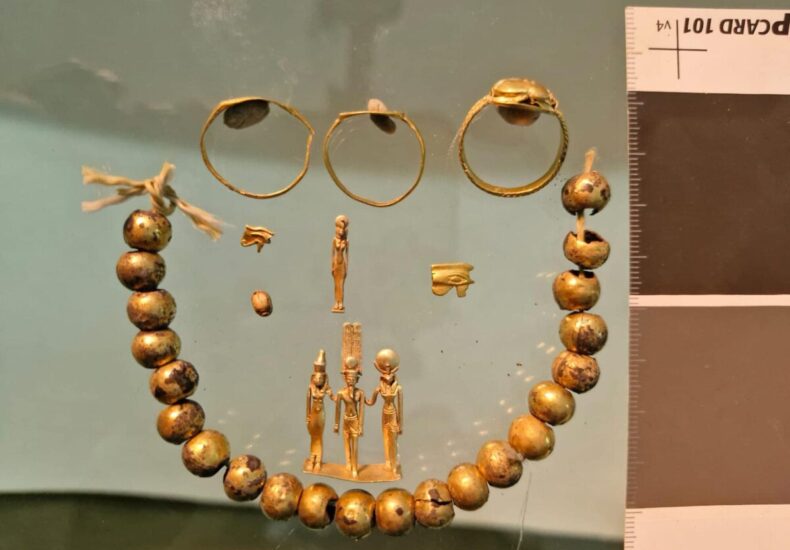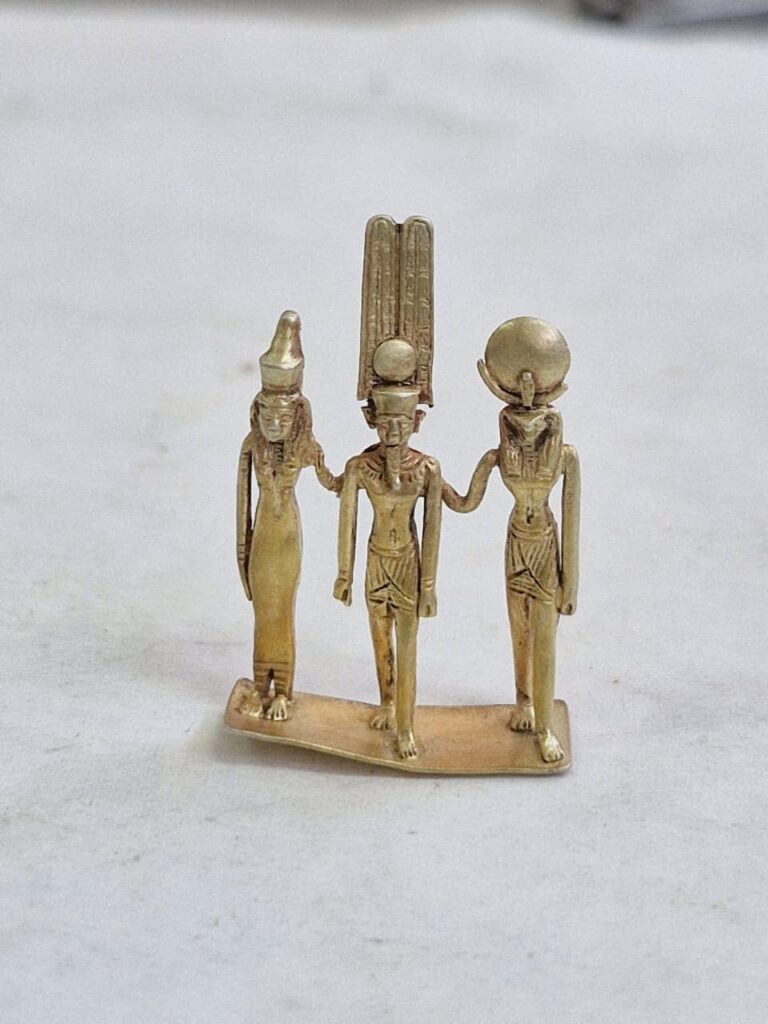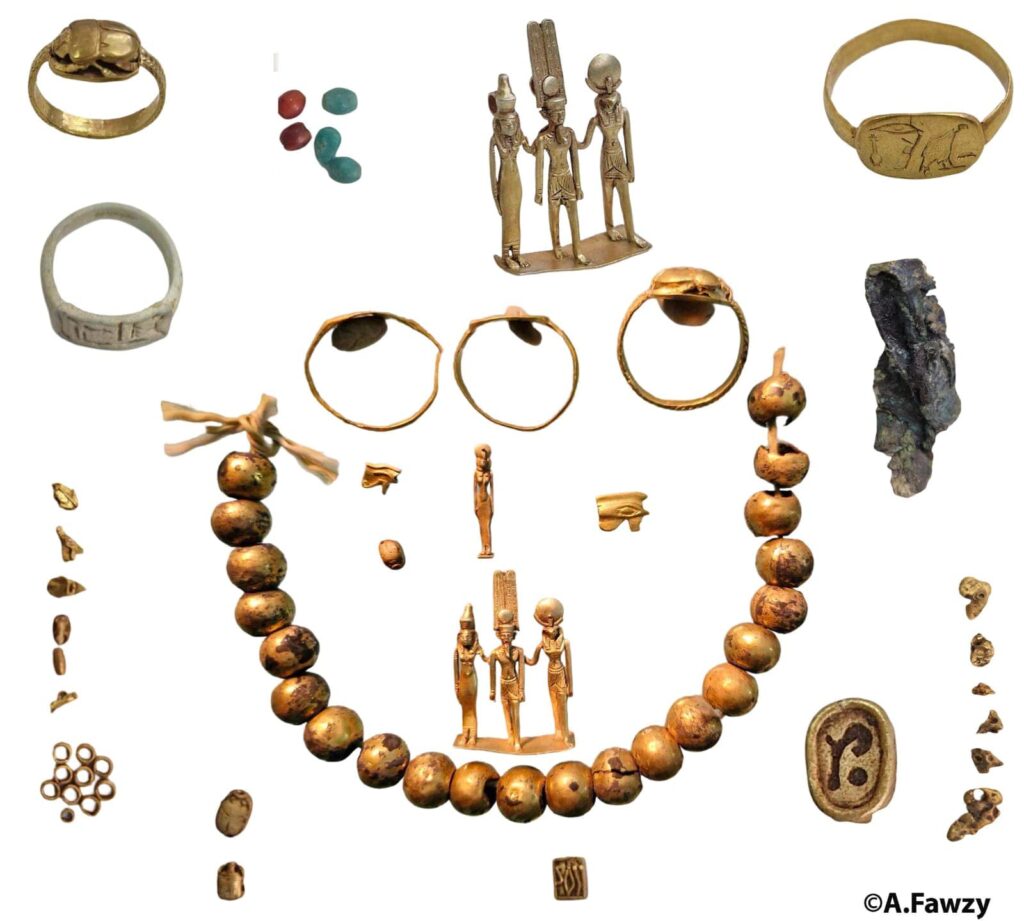
Karnak Temples Yield Treasures: Exquisite Jewelry and Amulets from Egypt’s 26th Dynasty
A stunning collection of jewelry and amulets dating back to the early 26th Dynasty (664–525 B.C.) has been unearthed at the Karnak temples in Luxor, Egypt. This remarkable discovery, announced by the Egyptian Ministry of Tourism and Antiquities, offers a captivating glimpse into the artistry and religious practices of ancient Egypt.
A Treasure Trove Unveiled:
The find was made during excavations conducted by a joint Egyptian-French archaeological mission in the northern area of the Karnak complex. Inside a small, broken ceramic container, archaeologists found an array of exquisitely preserved jewelry pieces, including gold rings, statuettes, and gilded amulets. Among the most notable finds is a rare triptych depicting the Theban triad of deities: Amun, Mut, and Khonsu. The collection also includes metal brooches, amulets depicting gods in animal forms, and numerous decorative beads, some with gold coating.

Illuminating Ancient Practices:
This discovery provides invaluable insights into the religious life and cultural practices of the 26th Dynasty. The amulets and jewelry shed light on the beliefs and rituals of the time, while the depictions of gods in animal forms offer clues about the Egyptian pantheon and its significance in daily life.
Dr. Mohamed Ismail Khaled, Secretary-General of the Supreme Council of Antiquities, emphasized the significance of the find, stating that the recovered objects will help researchers gain a clearer understanding of the use of amulets and jewelry in Egyptian society during this period.

Enhancing Karnak’s Appeal:
The excavation is part of a larger initiative to enhance the tourist experience at Karnak, one of Egypt’s most popular archaeological sites. This initiative includes modernizing tourist routes, installing a new lighting system, and restoring the sanctuary of Amenhotep I.
Egypt’s Minister of Tourism and Antiquities, Mr. Sherif Fathy, highlighted the importance of these efforts in preserving historical heritage and making the Karnak complex an even more attractive destination for visitors.
International Collaboration and Future Discoveries:
The discovery of this exquisite collection underscores the importance of international collaboration in archaeological research. The Egyptian-French partnership has yielded significant results, contributing to a deeper understanding of the Karnak temples and their evolution over time.
As excavations continue at this vast and historically rich site, the world eagerly anticipates further revelations that will illuminate the splendor and complexity of ancient Egyptian civilization.
Credit: The Egyptian Ministry of Tourism and Antiquities
You may also like
- A 1700-year-old statue of Pan unearthed during the excavations at Polyeuktos in İstanbul
- The granary was found in the ancient city of Sebaste, founded by the first Roman emperor Augustus
- Donalar Kale Kapı Rock Tomb or Donalar Rock Tomb
- Theater emerges as works continue in ancient city of Perinthos
- Urartian King Argishti’s bronze shield revealed the name of an unknown country
- The religious center of Lycia, the ancient city of Letoon
- Who were the Luwians?
- A new study brings a fresh perspective on the Anatolian origin of the Indo-European languages
- Perhaps the oldest thermal treatment center in the world, which has been in continuous use for 2000 years -Basilica Therma Roman Bath or King’s Daughter-
- The largest synagogue of the ancient world, located in the ancient city of Sardis, is being restored











Leave a Reply